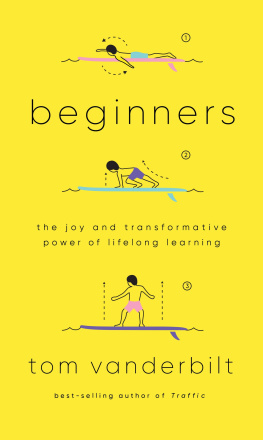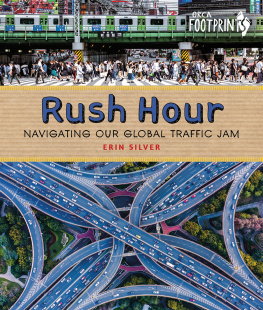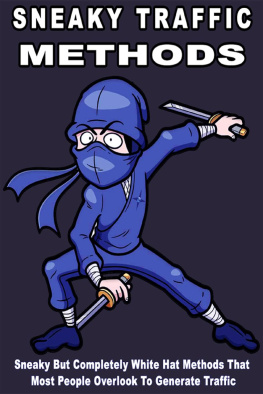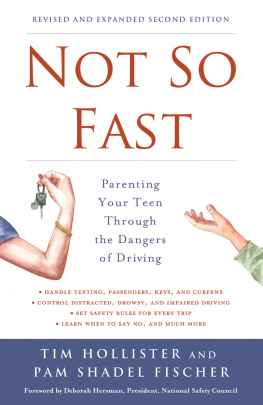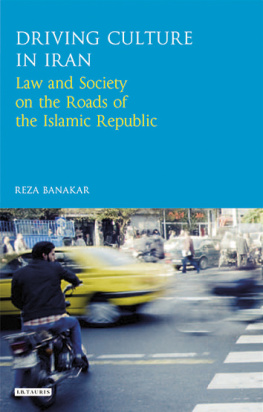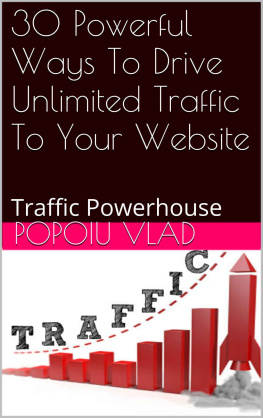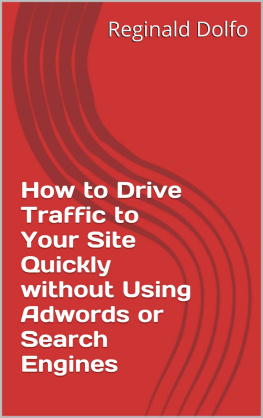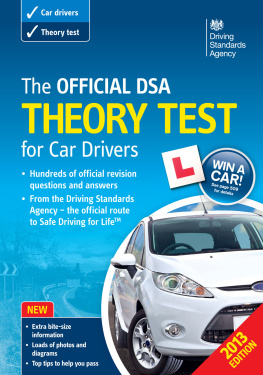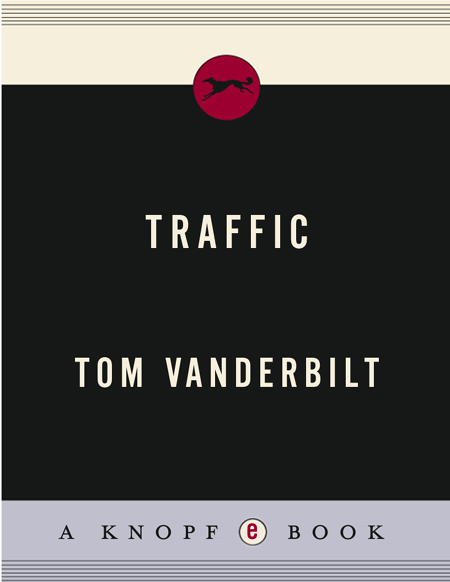
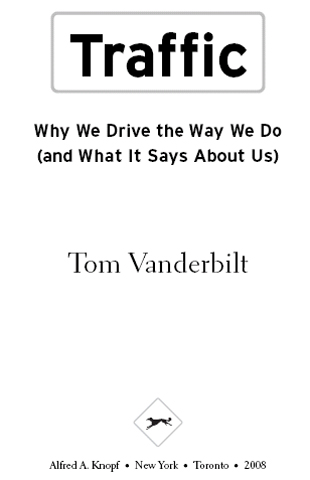

Prologue
Why I Became a Late Merger (and Why You Should Too)
Chapter One
Why Does the Other Lane Always Seem Faster? How Traffic Messes with Our Heads
Chapter Two
Why Youre Not as Good a Driver as You Think You Are
Chapter Three
How Our Eyes and Minds Betray Us on the Road
Chapter Four
Why Ants Dont Get into Traffic Jams (and Humans Do): On Cooperation as a Cure for Congestion
Chapter Five
Why Women Cause More Congestion Than Men (and Other Secrets of Traffic)
Chapter Six
Why More Roads Lead to More Traffic (and What to Do About It)
Chapter Seven
When Dangerous Roads Are Safer
Chapter Eight
How Traffic Explains the World: On Driving with a Local Accent
Chapter Nine
Why You Shouldnt Drive with a Beer-Drinking Divorced Doctor Named Fred on Super Bowl Sunday in a Pickup Truck in Rural Montana: Whats Risky on the Road and Why

Why I Became a Late Merger (and Why You Should Too)
Why does the other lane always seem to be moving faster?
It is a question you have no doubt asked yourself while crawling down some choked highway, watching with mounting frustration as the adjacent cars glide ahead. You drum the wheel with your fingers. You change the radio station. You fixate on one car as a benchmark of your own lack of progress. You try to figure out what that weird button next to the rear-window defroster actually does.
I used to think this was just part of the natural randomness of the highway. Sometimes fate would steer me into the faster lane, sometimes it would relinquish me to the slow lane.
That was until recently, when I had an experience that made me rethink my traditionally passive outlook on the road, and upset the careful set of assumptions that had always guided my behavior in traffic.
I made a major lifestyle change. I became a late merger.
Chances are, at some point you have found yourself driving along the highway when a sign announces that the left lane, in which you are traveling, will close one mile ahead, and that you must merge right.
You notice an opening in the right lane and quickly move over. You breathe a sigh, happy to be safely ensconced in the Lane That Will Not End. Then, as the lane creeps to a slow halt, you notice with rising indignation that cars in the lane you have vacated are continuing to speed ahead, out of sight. You quietly seethe and contemplate returning to the much faster left laneif only you could work an opening. You grimly accept your condition.
One day, not long ago, I had an epiphany on a New Jersey highway. I was having a typical white-knuckle drive among the scenic oil-storage depots and chemical-processing plants of northern Jersey when suddenly, on the approach to the Pulaski Skyway, the sign loomed: LANE ENDS ONE MILE. MERGE RIGHT.
Seized by some rash impulse, I avoided the instinctual tickle at the back of my brain telling me to get in the already crowded right lane. Just do what the sign says, that voice usually counsels. Instead, I listened to another, more insistent voice: Dont be a sucker. You can do better. I plowed purposefully ahead, oblivious to the hostile stares of other drivers. From the corner of my eye I could see my wife cringing. After passing dozens of cars, I made it to the bottleneck point, where, filled with new-found swagger, I took my rightful turn in the small alternating zipper merge that had formed. I merged, and it was clear asphalt ahead. My heart was beating faster. My wife covered her face with her hands.
In the days after, a creeping guilt and confusion took hold. Was I wrong to have done this? Or had I been doing it wrong all my life? Looking for an answer, I posted an anonymous inquiry on Ask MetaFilter, a Web site one can visit to ask random questions and tap into the hive mind of an anonymous audience of overeducated and overopinionated geeks. Why should one lane move faster than the other, I wanted to know, and why are people rewarded for merging at the last possible moment? And was my new lifestyle, that of the late merger, somehow deviant?
I was startled by the torrent of responses, and how quickly they came. What struck me most was the passion and conviction with which people argued their various casesand the fact that while many people seemed to think I was wrong, almost as many seemed to think I was right. Rather than easy consensus, I had stumbled into a gaping divide of irreconcilable belief.
The first camplet us name it after the bumper sticker that says PRACTICE RANDOM ACTS OF KINDNESSviewed early mergers as virtuous souls doing the right thing and late mergers as arrogant louts. Unfortunately, people suck, wrote one Random Acts poster. Theyll try whatever they can to pass you, to better enjoy the traffic jam from a few car lengths ahead of you. People who feel that they have more pressing concerns and are generally more important than you will keep going, and some weak-spined schmuck will let them in further down, slowing your progress even more. This sucks; Im afraid its the way of the world.
Another camp, the minority camplets call them Live Free or Die, after the license-plate motto of the state of New Hampshireargued that the late mergers were quite rationally utilizing the highways maximum capacity, thus making life better for everyone. In their view, the other groups attempts toward politeness and fairness were actually detrimental to all.
It got more complicated. Some argued that late merges caused more accidents. Some said the system worked much better in Germany, and hinted that my dilemma perhaps revealed some national failing in the American character. Some said they were afraid of not being let in at the last moment; some said they would actively try to block someone from merging, the way truckers often do.
So what was going on here? Are we not all driving the same road, did we not all pass the same driving tests? What was puzzling was not just the variety of responses but the sense of moral righteousness each person attributed to his or her highway behavior, and the vitriol each person reserved for those holding the opposite view. For the most part, people were not citing traffic laws or actual evidence but their own personal sense of what was right.
I even found someone claiming to have had a conversion experience exactly the opposite of mine. Until very recently, I was a late merger, wrote the author, an executive with a software company, in a business magazine. Why had he become a born-again early merger? Because I came to realize that traffic flowed faster the sooner people merged. He used this as a metaphor for successful team building in corporate America, in which late mergers were those who consistently put their own opinions and motives above the greater company. Early mergers, he wrote, could help push companies to their maximum communal speed.
But did traffic flow faster when people merged sooner? Or did it just seem more noble to think that it did?

Next page

